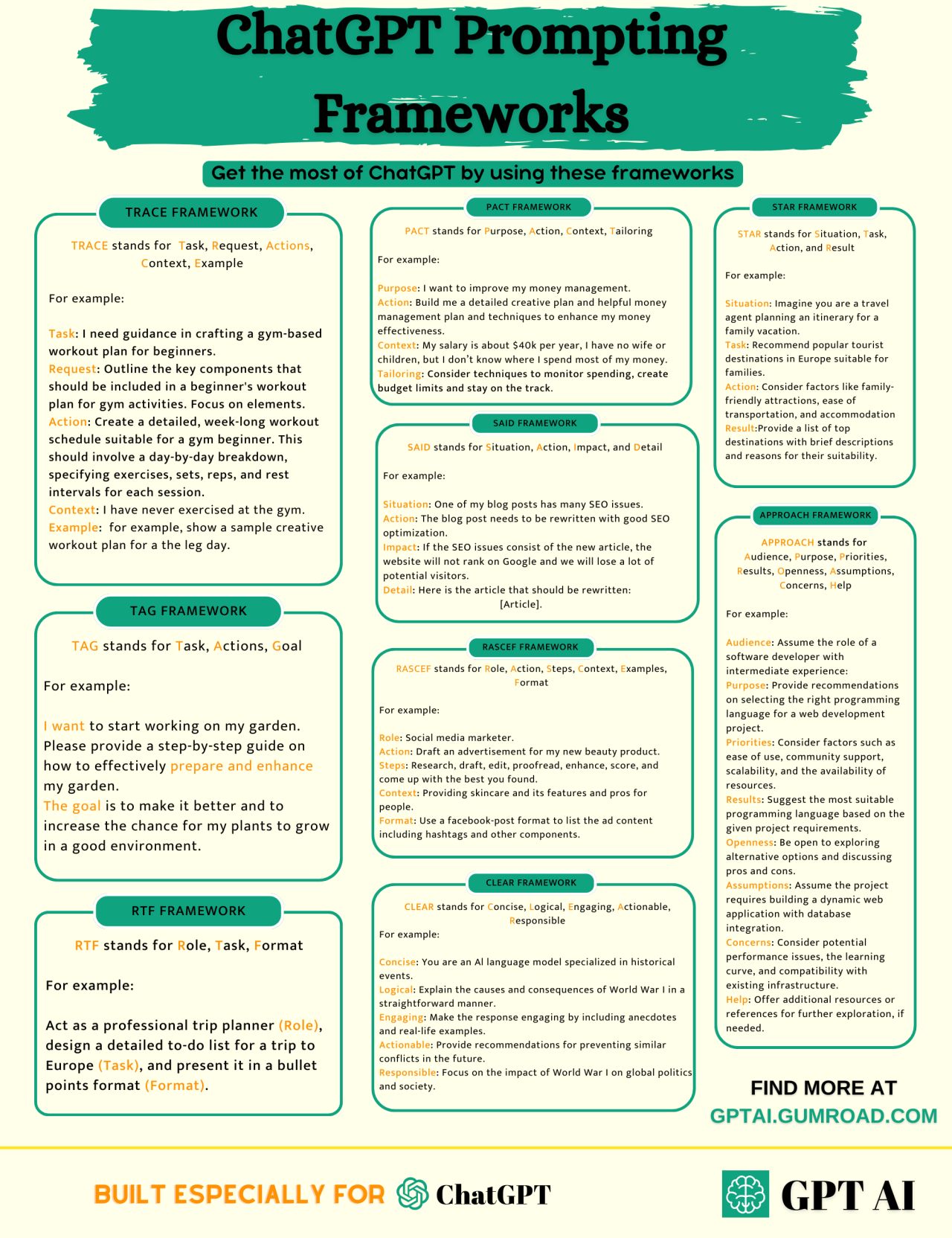
February 16, 2024
Revolutionizing Text Generation with ChatGPT Prompting Framework
Introduction:
In recent years, natural language processing (NLP) has witnessed tremendous advancements, with models like OpenAI's GPT (Generative Pre-trained Transformer) leading the charge. These models excel at generating human-like text given a prompt, making them invaluable for various applications such as chatbots, content generation, and creative writing. In this blog post, we'll delve into the ChatGPT prompting framework, exploring its capabilities, usage, and the potential it holds for revolutionizing text generation tasks.
Understanding the ChatGPT Prompting Framework:
The ChatGPT prompting framework is a methodology for leveraging GPT-based models, such as GPT-3, for generating text based on specific prompts. Unlike traditional approaches that rely solely on model fine-tuning or direct generation, the prompting framework involves crafting well-designed prompts to elicit desired responses from the model.
Components of the Prompting Framework:
Prompt Formulation: Crafting effective prompts is crucial for guiding the model to produce desired outputs. Prompts should be clear, concise, and tailored to the task at hand. They can include context-setting information, questions, directives, or even specific keywords to steer the model's generation process.
Response Filtering: After generating responses from the model, it's essential to filter and select the most relevant and coherent outputs. This may involve evaluating responses based on criteria such as coherence, relevance, grammaticality, and adherence to the given prompt.
Iterative Refinement: Refinement is an iterative process where prompts are continuously adjusted based on model outputs and user feedback. By refining prompts over multiple iterations, users can fine-tune the model's responses to better suit their requirements.
Utilizing the ChatGPT Prompting Framework in Practice:
Let's explore a practical example of how the ChatGPT prompting framework can be applied in a chatbot scenario:
Scenario: Building a Customer Support Chatbot
1. Prompt Formulation:
- Prompt: "Customer: Hello! I'm experiencing issues with my account. Can you help me?"
2. Response Filtering:
- Filter responses based on relevance, accuracy, and helpfulness.
- Discard irrelevant or nonsensical responses.
- Select responses that provide clear instructions or troubleshooting steps.
3. Iterative Refinement:
- Gather user feedback on bot responses.
- Adjust prompts based on feedback to improve response quality.
- Continuously monitor and refine the chatbot's performance over time.
Benefits and Potential Applications:
The ChatGPT prompting framework offers several benefits and has wide-ranging applications across various domains:
Customization: Users can tailor prompts to specific use cases and requirements, ensuring that model outputs meet their exact needs.
Control: By providing explicit prompts, users exert greater control over the model's generation process, leading to more predictable and reliable outputs.
Adaptability: The framework allows for iterative refinement, enabling users to adapt and improve model responses over time based on feedback and changing requirements.
Scalability: ChatGPT prompting can scale to handle diverse text generation tasks, from customer support and content creation to educational tools and creative writing assistants.
Conclusion:
The ChatGPT prompting framework represents a paradigm shift in text generation, empowering users to harness the capabilities of advanced NLP models effectively. By employing well-crafted prompts, users can guide model behavior, shape generated outputs, and achieve desired outcomes across a wide range of applications. As NLP continues to evolve, the ChatGPT prompting framework stands at the forefront, offering unprecedented control and flexibility in text generation tasks.
640 views
